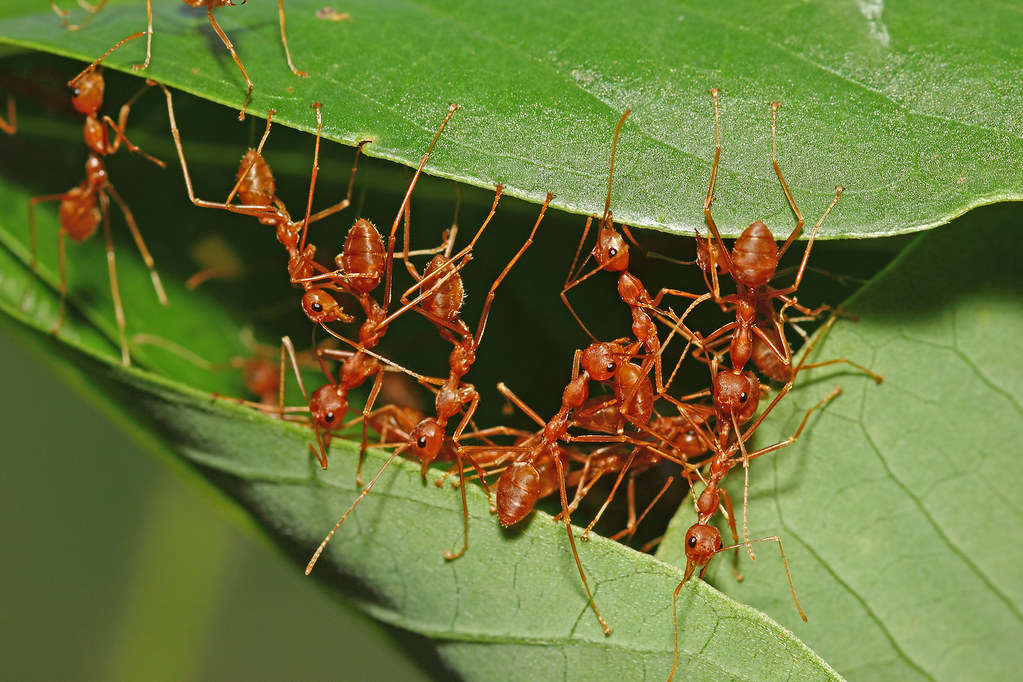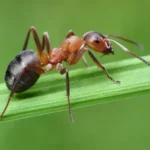Ants are among the most industrious and social insects in the animal kingdom.
Their ability to work together to build and maintain complex colonies is a testament to their cooperation and collective intelligence.
But how exactly do ants build their colonies? The process is fascinating, involving teamwork, communication, and the remarkable adaptation to their environment.
In this article, we’ll explore the steps ants take to create their homes, and the roles each ant plays in the colony’s construction and growth.
Table of Contents
ToggleChoosing the Right Location
The foundation of any ant colony begins with the selection of a suitable site.
For many species, the queen ant is the one to find and settle on a location, although worker ants also play a significant role in scouting and determining whether the site has enough resources for long-term survival.
In some cases, ants will nest in underground tunnels, while others might create nests in rotting wood or within the cavities of trees.
The ideal location offers protection from predators, access to food sources, and a stable environment for the colony to thrive.
Once the site is chosen, the queen will begin laying eggs, marking the beginning of the colony’s development.
The Role of the Queen and the First Workers
The queen ant plays a crucial role in starting the colony. After mating, she is the sole individual responsible for reproduction.
Initially, the queen will lay a small number of eggs, which hatch into workers. These first workers are often tasked with the job of expanding the nest, foraging for food, and caring for subsequent generations of eggs laid by the queen.
The queen’s sole focus is reproduction, and she can lay thousands of eggs during her lifetime. This reproductive power is essential for the colony’s growth.
As the first workers mature, they take over various tasks, including fortifying and expanding the nest.
Building the Nest: Tunnels and Chambers
One of the most fascinating aspects of ant colonies is the architecture of their nests.
Ants create elaborate networks of tunnels and chambers, which serve different purposes, such as storage, nurseries, and living spaces.
The structure of the nest varies depending on the species, but there are common elements shared by many.
Worker ants use their jaws (mandibles) to dig and carry soil particles, creating intricate systems of tunnels.
As the colony expands, they build deeper and more complex networks. The chambers within the nest are often organized according to function:
- Nursery Chambers: These rooms are where the eggs and larvae are kept. Worker ants take great care to maintain the proper temperature and humidity levels for the developing ants.
- Food Storage: Some species, such as leafcutter ants, store food in specific chambers. These ants forage for organic material, which is often brought back to the nest for consumption or cultivation.
- The Queen’s Chamber: This chamber is typically separated from the rest of the colony to protect the queen, who remains the central figure of reproduction.
Interestingly, the tunnels and chambers are often carefully maintained and regularly cleaned, as ants are meticulous about keeping their living environment safe and hygienic.
Some species of ants also use their saliva to create tunnels that are reinforced with a form of natural glue, ensuring the structure’s stability.
Cooperation and Division of Labor
The success of an ant colony lies in the division of labor. Worker ants are not just builders—they perform a wide variety of tasks, including foraging, defending the colony, nursing the young, and caring for the queen. Each ant has a specific role based on its age and physical characteristics.
- Nurse ants take care of the eggs, larvae, and pupae, feeding them and ensuring their survival.
- Forager ants leave the nest to search for food and other resources, often traveling long distances and using pheromone trails to communicate with their fellow workers.
- Soldier ants are larger and more powerful, tasked with protecting the nest from predators or threats.
Ant colonies operate with incredible efficiency because of this cooperative division of labor. Each ant understands its role within the colony, and their collective actions ensure the survival and success of the colony.

Ant Communication and Pheromones
One of the key factors that make ant colonies so effective is the way ants communicate.
Ants use a variety of signals to convey information to one another, but the most important of these is the use of pheromones—chemical substances secreted by ants that trigger specific behaviors in other ants.
For example, when a forager ant finds food, it releases a trail of pheromones to guide other ants to the food source.
Similarly, ants may use alarm pheromones to alert the colony to the presence of a threat or danger. This sophisticated chemical communication system helps maintain order and efficiency within the colony.
Expansion and Maintenance of the Colony
As the colony grows, so too does the need for more space and resources. Ants constantly work to expand their nests, digging new tunnels and constructing additional chambers as needed.
The colony may also engage in a process called budding, where a portion of the colony splits off to establish a new nest.
This ensures the survival of the species, especially if the original nest becomes compromised or the resources run out.
Some species of ants, like the weaver ants, are known for building elaborate hanging nests by linking together leaves with silk produced by their larvae.
Others, like army ants, don’t build permanent nests at all but instead create temporary bivouacs—live, movable nests formed by worker ants clinging to one another.
Adapting to Changing Environments
Ants are masters of adaptation, and their nests are built to withstand changing environmental conditions.
They can adjust the temperature, humidity, and air circulation within the colony by altering the structure of their tunnels and chambers.
For example, during extremely hot or cold weather, ants may deepen their tunnels or move their eggs and larvae to more insulated chambers to protect them.
In some cases, ants will even work together to move their entire colony to a new location if the current nest becomes unsuitable due to flooding, predation, or other environmental factors.
This remarkable ability to adapt to changing conditions helps ensure the colony’s survival in the long run.
The Role of Ants in the Ecosystem
While ants are expert builders and efficient workers, their colonies also play an important role in maintaining the health of ecosystems.
Their nests aerate the soil, improve its drainage, and help recycle nutrients. Some ants, such as the leafcutter ants, cultivate fungi in their nests by bringing organic matter back to their colonies, which they use as food for the fungus.
This mutualistic relationship benefits both the ants and the fungi.
Ants also help control pest populations by preying on smaller insects or competing for resources, thus contributing to the overall balance of ecosystems.
Conclusion
The construction of an ant colony is an awe-inspiring example of teamwork, adaptation, and problem-solving.
From the initial selection of a site to the intricate network of tunnels and chambers that house and protect the colony, ants demonstrate the power of collective effort.
Their ability to communicate, divide labor, and adjust to their environment ensures the survival of their colonies and their continued role in shaping ecosystems around the world.
Whether underground or in the trees, ants remain one of nature’s most successful and fascinating builders.



